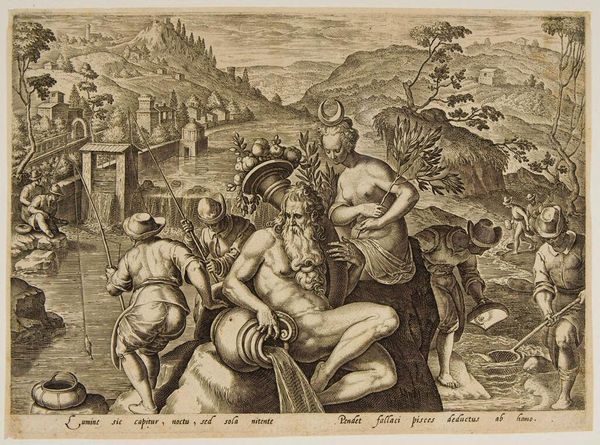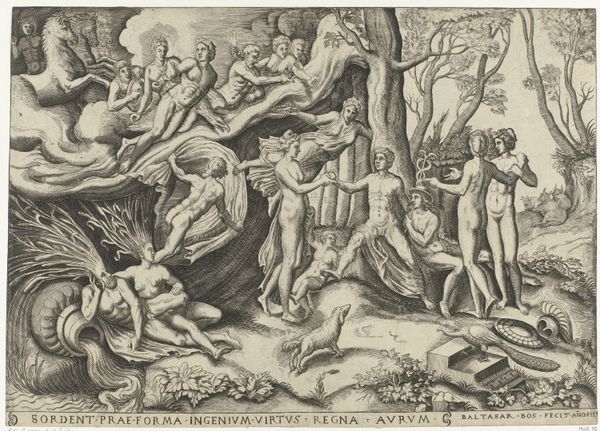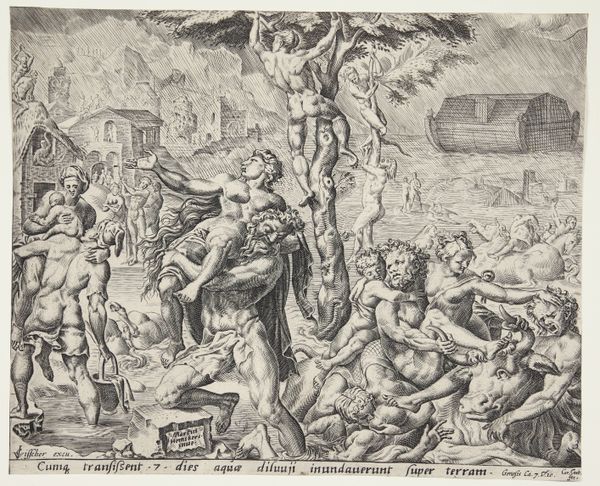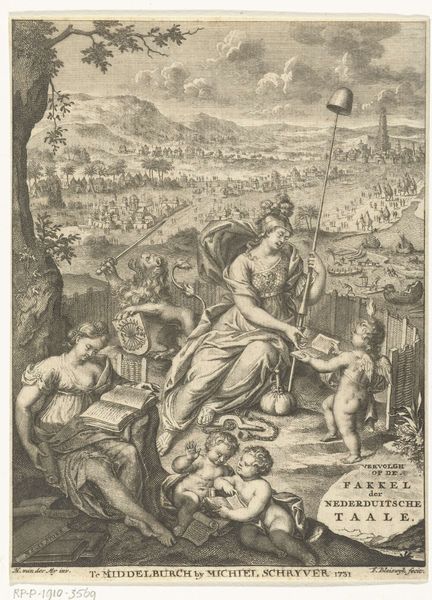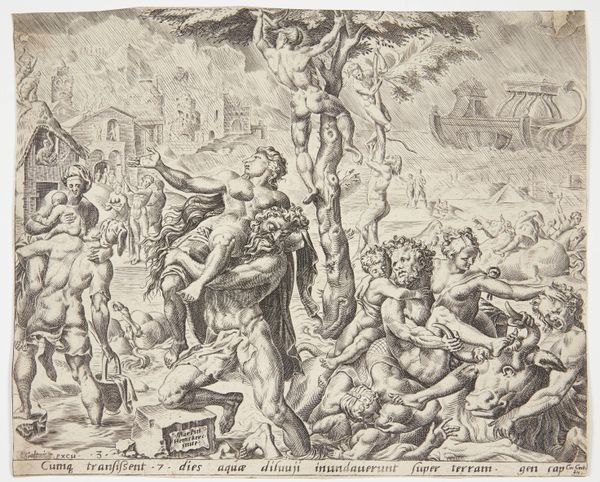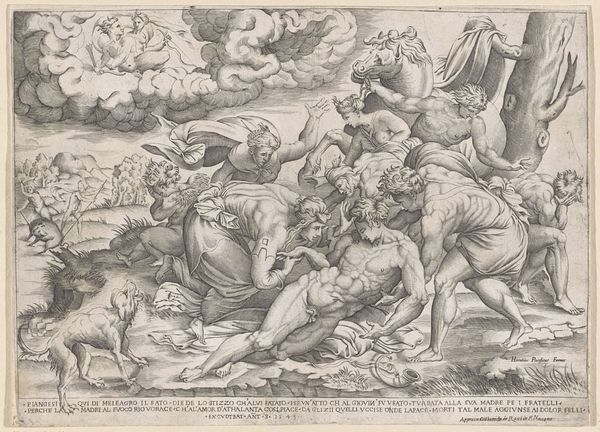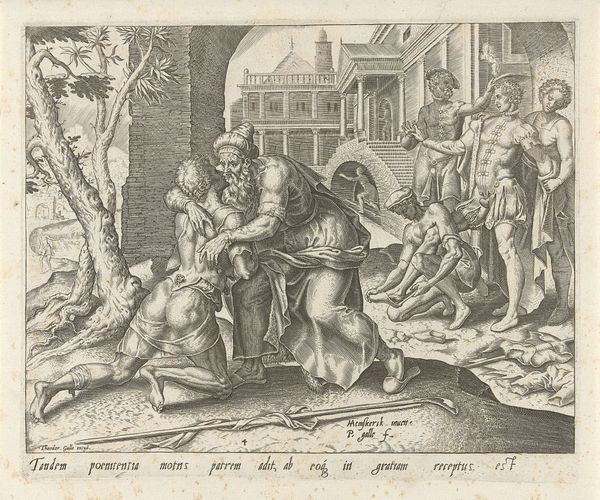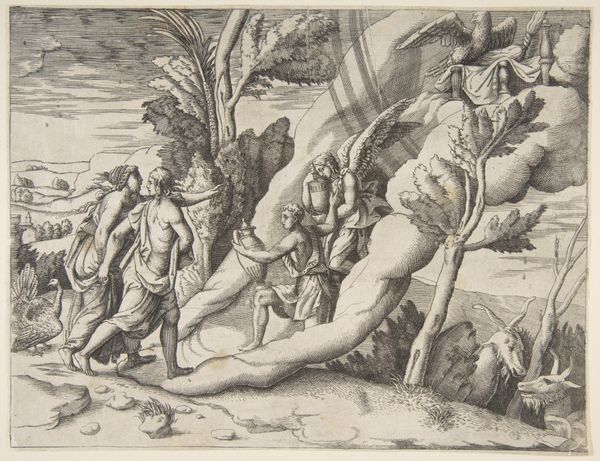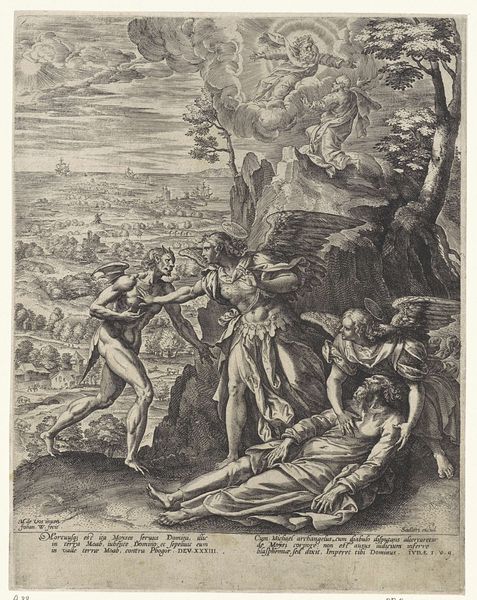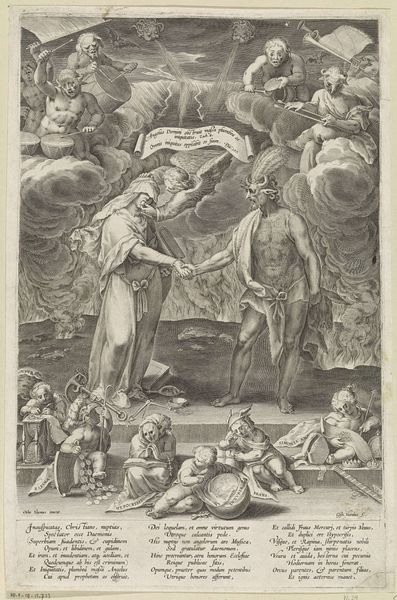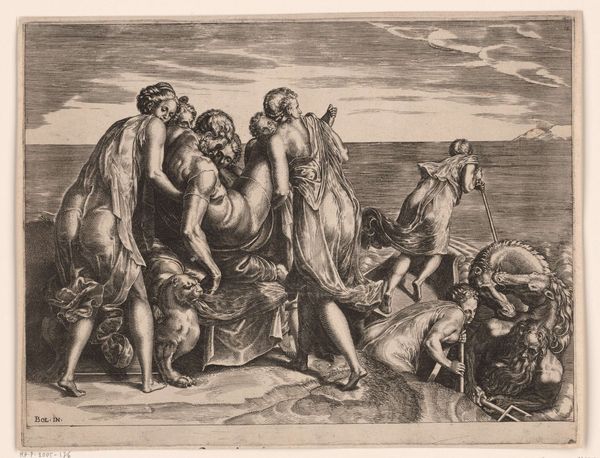
print, engraving
#
allegory
# print
#
landscape
#
mannerism
#
genre-painting
#
engraving
Dimensions: height 212 mm, width 291 mm
Copyright: Rijks Museum: Open Domain
Editor: This engraving, "Nachtelijk vissen met een hengel" or "Night Fishing with a Rod", created by Philips Galle in 1578, is rich with detail and activity, and printed using engraving techniques. The way the scene is set up, with all the people fishing and working, almost feels like an industry rather than a leisurely pursuit. How would you interpret this work? Curator: From a materialist perspective, let's consider the labor involved in producing this print. Engraving requires significant skill and time. It was a profession often tied to specific workshops and patronage systems. Consider how Galle, as a printmaker, facilitated the circulation of images and ideas, essentially manufacturing art for consumption. Editor: That's interesting. I hadn’t really thought about the engraving as an artifact itself. What about the fishing; does that represent labor too? Curator: Absolutely. Notice how Galle depicts different methods of fishing. It speaks to different skill levels and, potentially, access to resources. Are these people fishing for sustenance, or for market? The text beneath adds to the layers, telling us something of illusion and reliance on deception for survival. Could it reflect labor as being a deception by elites on commoners to control resources, similar to how religion may be used in Galle's period? Editor: I see your point. The varying levels of tools may represent different societal status levels in Galle's time. Curator: Exactly. And the landscape itself? Galle’s Mannerist landscapes were not simply idealized scenes but reflections of contemporary anxieties about land ownership and resources. Editor: So, you are suggesting that it's a complex piece showing production of both print and food and how labor dictates its production, not just for sustenance, but for something more complicated? Curator: Precisely. And Galle’s skillful rendering makes us, as viewers, complicit in the act of observing and, in a sense, consuming this manufactured representation of labor and society. The making, the doing, and the consuming are all wrapped together in a rather neat package, printed on paper for ease of handling. Editor: I guess I hadn't considered the impact and amount of labor required to disseminate this piece from Galle's perspective. It’s more than just a pretty picture. Thanks!
Comments
No comments
Be the first to comment and join the conversation on the ultimate creative platform.
